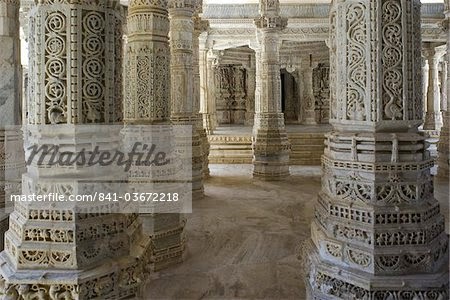Naga Mandala is a play by Indian playwright
Garish Karnad. I first saw this show in 1993 at the Guthrie Theatre and was enchanted by the play's structure - it is a play about a man who takes refuge in an abandoned Indian temple, who is told a story, and it comes to life on stage, but the man and "the story" (played by a young woman) are always present on the stage, and the set is always the temple. The audience must use their imaginations to see the house, and village told of by "the story," and the anthill that plays such a large role.
In 2001, I was very lucky to have the opportunity to design scenery and costumes for this play at St. Mary's College of Maryland, and it was selected to compete at the
KCACTF in Pittsburgh.
 |
| 2001 Naga Mandala, St. Mary's College of MD |
 |
| The flames - 2001 production of Naga Mandala at St. Mary's College of MD |
Approximately five years ago I began suggesting we produce this play at SUNY Oneonta. For various reasons, it never made the season, but tiny water droplets can carve caves over time, and so suggesting this play every year, eventually got it on the stage.
It was imperative for my design to turn the theatre into the temple - this is a flexible space - currently set up in a strange cornered proscenium layout with quasi upstage depth. As soon as the audience walked in I wanted them to see the temple - to be in the temple. I wanted the set to be very textural. The carving on temples in India is incredibly detailed and so prolific, and I wanted to do as much as we could to emulate that (albeit in a simplified way due to our limited budgets and student crew availability).
It was important to give the lighting designer ample opportunity for playing with light and shadow.
How could I do this and keep the cost down? Recycle. In graduate school I had the honor and pleasure of working with renown designer,
Desmond Heeley. He created a design for Oedipus Rex in which the columns were decorated with garbage - smashed soda cans, plastic cutlery - things that could be salvaged from the trash and applied to the columns. It looked AMAZING. I have never forgotten his work, and it came to mind as I approached this. So, I got the entire Theatre department to start saving bottle caps - water bottles, milk jugs, soda, juice - all of the caps were brought in by students, put in boxes left near trash cans asking to the caps, and the occasional foray into the dumpster. We got several paint cans worth, sorted by size. I also used plastic yoghurt containers, as well as "canned" fruit in plastic snack packs. Along with ethafoam rod/ backer rod, I applied the recycling to the various columns, and the frieze band that bordered the entire set.
All of this had to be painted in foam coat, as did the mutilated god, Ganesha - who had no lower arms or hands and who had ears that were broken off. Then the entire set - floor, walls, columns, and broken column pieces needed to be based, then rag rolled in a two color texture, and finally Ganesha painted to look like he was a different type of stone. Aerial silks had been rigged to created hair for one scale altering scene, and finally, the eight foot square mandala I had painted needed to be installed in the floor.
There were, as with all designs, things I wish I had had more time to do. I had wanted to paint in large ashlar block outlines on the walls and floors, but in academic theatre - well, all theatre, sometimes you have to adjust due to time constraints, so the outlines did not happen. Overall however, I am pleased with the outcome.
What follows is a photo progression of the process.
 |
| laying out the mandala |
 |
| some of our stash of caps |
 |
| recycled materials |
 |
| pilasters lined the walls |
 |
| laying out the frieze band |
 |
| supports for the cobra pillar |
 |
| reusing masonite from a previous show as well as the caps |
 |
| Sonotube is a scenic designers friend! |
 |
| naga pilaster in progress |
 |
| foam coating the plastics |
 |
| frieze band based |
 |
| Chicken wire covered with muslin give a nice scale patter for the naga pillars |
 |
| view of the upstage area from above |
 |
| pilaster, part of the frieze band, "broken" pillar pieces |
 |
| beginning the rag roll colors |
 |
| my sketch for Ganesha, and the beginning of the carving (I am no sculptor!) |
 |
| no hands, broken ears |
 |
| Rani, Naga, and the flames |
 |
| Rani and Naga, looking through to the upstage area |
 |
| Rani, sleeping |
 |
| The Story and the song |
 |
| Rani and Appanna in front of the village elders |
 |
| Naga in the hair |
 |
| the flame, leaving the lantern |
 |
| Stage right |
 |
| Stage left |
 |
| Ganesha (or an "absent god") and the naga mandala |
 |
| Naga pilasters defined the edge of the space |




















































